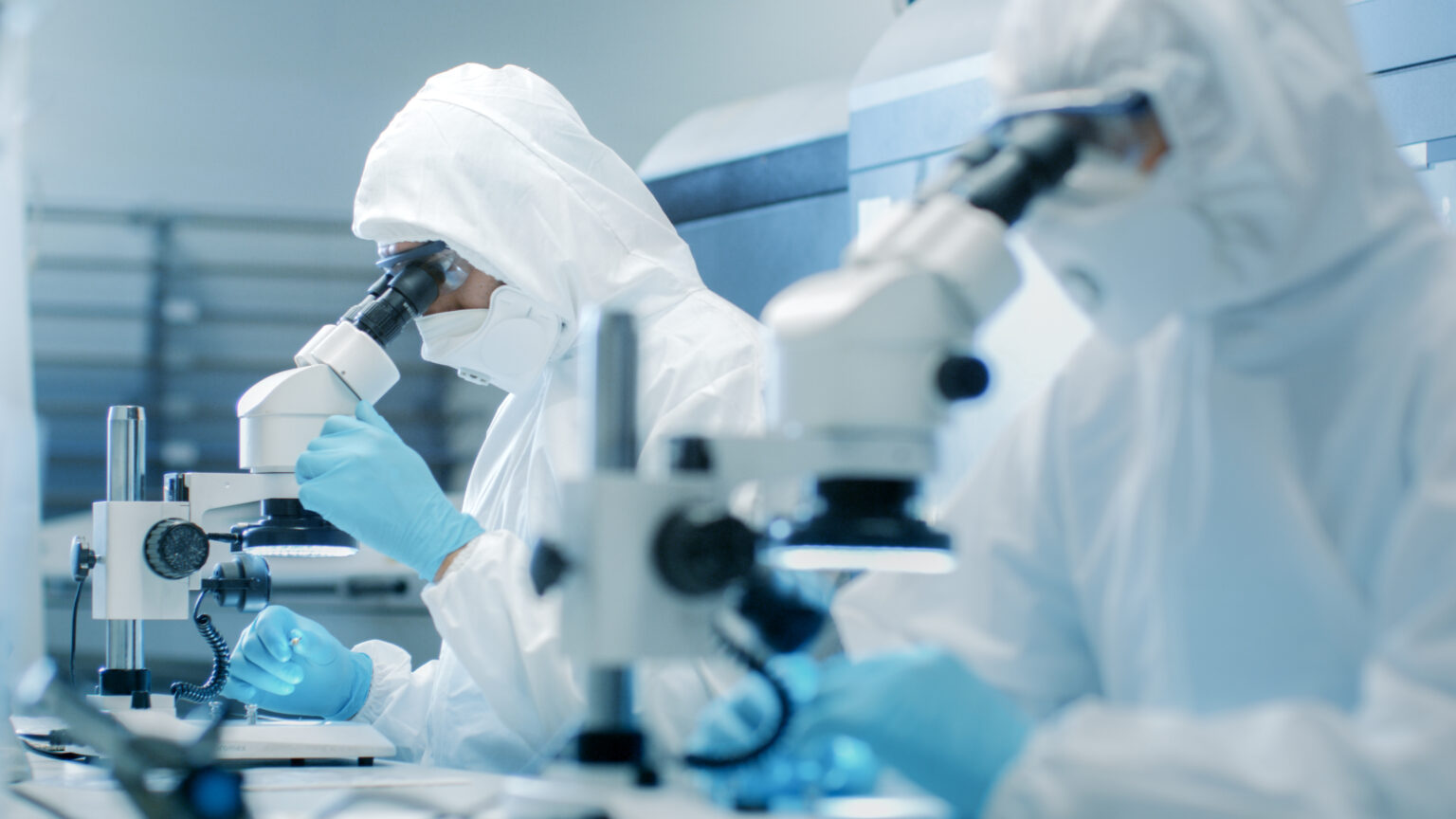
May 29, 2025
Anne M. Schuler
Method Validation, Bioburden Analysis, Sterility Testing, Endotoxin Assays, Lot Release Quantities, Bacterial Endotoxin Testing
Quality Control, USP <71>, USP <85>, ISO 11737-3
Frequently Asked Questions About Microbiological Testing for Medical Devices and Pharmaceuticals
Medical Device manufacturers must meet rigorous microbiological requirements to ensure product quality and patient safety. This FAQ addresses several important considerations related to sterility, bioburden, endotoxin testing, and method validation—offering guidance on topics that often arise during product development, lot release, and routine quality control.
Quick Navigation
Why do certain tests require a method validation before performing routine testing?
Certain tests such as bioburden analysis, sterility testing, and endotoxin assays require the intended test method be validated to demonstrate that the test article does not interfere with the method and that the method is reliable, and reproducible for its intended use. Each product has unique characteristics — such as formulation, material composition, or surface properties — that can influence test outcomes. A method that performs well with one product might not yield accurate or consistent results with another. Validating the method ensures the test performs as expected with the product’s specific attributes. Regulatory agencies and notified bodies expect test method for certain assays be validated to ensure the validity of the resulting data. Not all assays require validation, we can help you guide you through this process to ensure your products are properly tested with results you can depend on.
What quantities are required for lot release testing?
Pharmaceutical manufacturers of sterile injectables typically perform USP <71> Sterility and USP <85> Endotoxin lot release testing. The quantities required as stated in the USP are as follows.
| Number of Items in the Batch | Minimum Number of Items to be Tested for Each Medium1 (unless otherwise justified and authorized) |
|---|---|
| Small Volume Parenteral preparations | |
| Not more than 100 containers | 10% or 4 containers, whichever is the greater |
| More than 100 but not more than 500 containers | 10 containers |
| More than 500 containers | 2% or 20 containers, whichever is less |
| For large-volume parenterals | 2% or 10 containers, whichever is less |
1 Two (2) medias are used for testing.
| Lot / Batch Size | Number of Samples |
|---|---|
| <30 | 2 |
| 30 – 100 | 3 |
| ≥ 100 | 3% to not exceed 10 |
Do I need bacterial endotoxin testing if my device has cardiovascular system, lymphatic system, or cerebrospinal fluid contact?
Yes, bacterial endotoxin testing is required if your device comes into contact with cardiovascular, lymphatic, or cerebrospinal fluid systems and is labeled as non-pyrogenic. The bacterial endotoxin test (BET) is an in vitro assay for detection and quantification of bacterial endotoxins, a component of the cell wall of gram-negative bacteria, ISO 11737-3 specifically addresses the quantitation and significance of endotoxins on a medical device, providing a framework for establishing and validating acceptable endotoxin limits based on the device’s intended use and route of administration. The endotoxin limit for medial devices is not more than 20.0 EU/device unless the device will have contact with cerebrospinal fluid, in which case the limit 2.15 EU/device. Ophthalmic implants and OVD’s may be required to meet a lower limit of 0.2 EU/device or 0.2 EU/mL.
My bioburden counts have spiked recently, what actions should I take to reduce the counts?
If your bioburden counts have recently spiked, this signals a potential deviation in your manufacturing process or contamination control strategy, and it’s essential to take prompt, structured action to maintain product cleanliness. Start by conducting a thorough investigation to identify the root cause. Review recent changes across your production process—including raw material sourcing, operator handling, cleaning protocols, environmental controls, and equipment maintenance. Even minor changes, such as a new supplier or modified packaging procedure, can introduce microbial variability. Environmental monitoring data from associated areas should be analyzed for elevated microbial loads, as a spike in airborne or surface contamination may correlate with your bioburden increase. It’s also advisable to perform microbial identification on the recovered organisms to assess whether they originate from human flora, raw materials, water sources, or environmental vectors, which can guide targeted corrective actions.
Next, trend your bioburden data to determine whether the increase is isolated or part of a broader shift. Compare current results with historical averages and alert/action limits. Immediate corrective actions might include intensified cleaning, retraining personnel on aseptic handling, inspecting air filtration systems, or performing preventative maintenance on equipment. Long-term process improvements may involve revising gowning procedures, redesigning workflows to reduce contamination risk, or reevaluating raw material bioburden control measures.
Document the full investigation, including the root cause analysis, corrective and preventive actions, and any revalidation activities. Update your risk assessments, SOPs, and bioburden control strategies as needed to reflect a more robust understanding of your process variability. Consistent monitoring and swift resolution of bioburden spikes are essential for ensuring continued product safety, regulatory compliance, and patient protection.
Need Help With Your Testing Strategy?
LexaMed offers expert guidance and full-service testing to support your microbiological quality programs. If you have questions or need help with method validation, test design, or interpreting results, contact our team today at [email protected]!

April 7, 2025
Jim G. Whitcomb
Sterility Assurance Level, Ethylene Oxide (EO), Gamma, E-Beam, Steam, Bioburden Determinations, Protocol Report Generation
Quarterly Dose Audits, Cycle Development, Bacterial Endotoxin, Population of Biological Indicators, D-Value Determination
Sterilization concepts can be a confusing and formidable challenge for companies looking to establish a sterilized product. For those looking for assistance with establishing a sterilization process for their product, LexaMed can help. LexaMed has the in-house expertise and laboratory testing capabilities to help manage all aspects of sterilization process validations.
For many types of medical devices and pharmaceuticals, a sterile condition is required for obvious infection prevention reasons. The definition of sterile means the absence of viable microbial organisms. While this is a simple definition, the determination or measurement of whether a product is “sterile” is not as simple. Since microorganisms are too small to be seen with the naked eye, a sterile condition cannot be detected by visual inspection. A test for sterility on every sterilized item is impractical due to its destructive nature. Therefore, the state of being sterile can only be described in terms of the probability that viable microorganisms are present.
Sterilization process validation using any sterilization method involves three essential steps. These steps include defining the level of probability for microbial survival, defining the methods to achieve this level, and demonstrating that equivalent lethal conditions are achieved throughout the full load of commercial products. LexaMed has the resources to assist manufacturers with these three aspects through comprehensive project management, protocol and report authorship, and ISO 17025 accredited laboratory testing.
Useful guidance for defining the level of probability for microbial survival, also known as the sterility assurance level (SAL), can be found in ANSI/AAMI ST67:2019, Sterilization of Health Care Products – Requirements and Guidance for Selecting a Sterility Assurance Level for Products Labeled Sterile. In the United States, most devices and pharmaceuticals labeled as sterile from terminal sterilization processes will require a minimum SAL of 1 potential non-sterile unit in 1,000,000 processed. In mathematical terms, this can be stated as a 1 X 10-6 probability of a non-sterile unit. This SAL will apply to items that are invasive or implanted in the body, have contact with the blood stream, and/or have contact with compromised tissue. Some devices, however, may not be able to withstand the physical stress of a terminal sterilization process required to achieve a SAL of 10-6 and may need an alternate sterile claim. In these cases, a thorough assessment of alternate manufacturing materials or design, modifications to the sterilization process or approach to validation, and consideration of alternate sterilization modalities must be documented before a risk assessment is made to justify support for an alternate sterile claim greater than 10-6 (10-5 or 10-4).
There are options available for methodologies to demonstrate a validated sterilization process. For a gaseous sterilant such as Ethylene Oxide, commonly used strategies are the ‘overkill’ and ‘BI/Bioburden’ methods. These procedures are detailed in nationally recognized documents such as the ethylene oxide standard, ANSI/AAMI/ISO 11135:2014, Sterilization of Health Care Products – Ethylene Oxide – Requirements for the Development, Validation, and Routine Control of a Sterilization Process for Medical Devices. The foundation of these two methods requires establishing a log10 linear death rate kinetic for a biological indicator (BI) placed into the most difficult to sterilize location of a worst-case challenge device, also known as a master challenge device (MCD). In either method, the BI is used as a surrogate for the natural bioburden and must first be shown to have equivalent or greater resistance to the sterilization process compared to the product’s bioburden. LexaMed can provide a detailed rationale for selection of the MCD and BI placement site as well as help determining the optimal procedure for establishing a linear death rate within a custom and comprehensive validation protocol.
Radiation sterilization processes are commonly conducted with gamma, E-beam, or X-ray energy. All three of these modalities use a bioburden-based approach to process validation. Linear death rate curves have been experimentally developed for many microorganisms by subjecting them to varying levels of radiation. All organisms were found to follow a similar model that allows a prediction for microbial survival based on exposure level. This facilitates the prediction of SAL for a particular bioburden level when exposed to a specific radiation dose. A few variations in radiation validation methods are available and are detailed in ANSI/AAMI/ISO 11137-2:2013/(R)2019, Sterilization of Health Care Products – Radiation – Part 2: Establishing the Sterilization Dose.
The final important step for sterilization validation involves demonstrating that similar lethal conditions exist within all points of the entire product load to be processed. This is a physical aspect that typically involves measurement of critical variables of a process such as energy dose, temperature, humidity, or sterilant concentration. These variables are affected by the product’s materials of construction, density, packaging, loading, and distribution within the sterilization chamber or energy field. To measure the physical aspects which impact the lethality of a sterilization process, sensors or monitors are distributed throughout the load in all areas. This data can then be analyzed to ensure that equivalent lethal conditions have been reached across the entirety of a product load.
No matter the sterilization process selected for a particular medical product, LexaMed can help make the process of establishing a sterilization process for your product less daunting. LexaMed offers expert management services that enable a timely completion of your sterilization project and offer consulting to resolve any issue that may arise during processing or testing. LexaMed also offers protocol and report services to provide you with thorough documentation which is essential for smooth navigation through regulatory waters. These documents will include the necessary rationales regulatory officials and notified body auditors are looking to ensure a valid sterilization process has been achieved.
If you have an upcoming sterilization validation project, and you’re not sure where to start, reach out to us at [email protected] and we’d love to help you navigate the world of sterilization validations.
Copyright @ 2025 LexaMed. All Rights Reserved